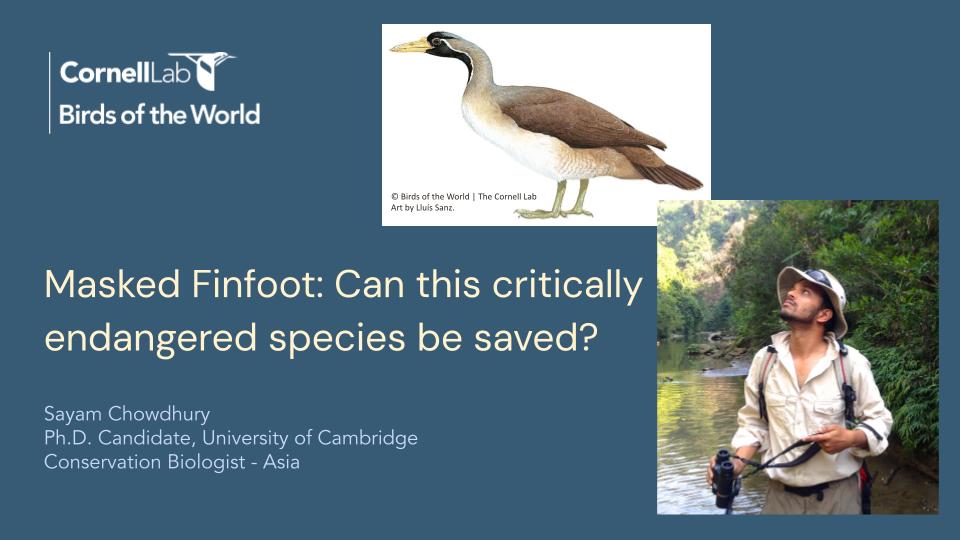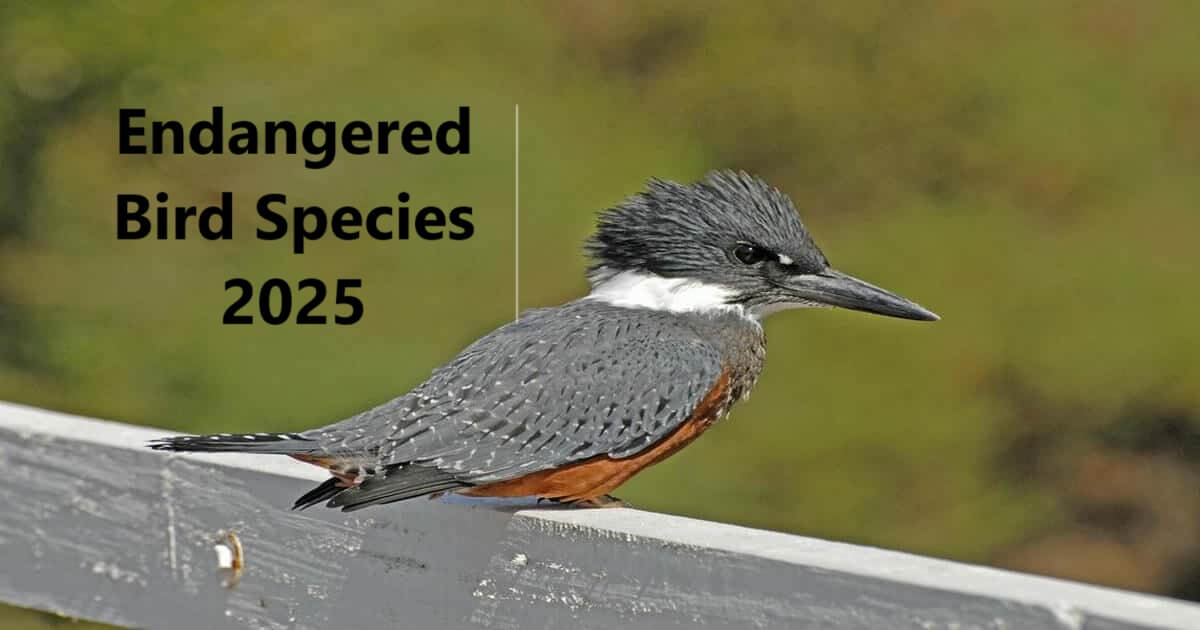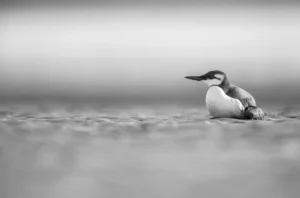Endangered Bird Species 2025
The world is losing bird species at an alarming rate. By 2025, many could be gone forever.
Birds play a crucial role in our ecosystems. They help control pests, pollinate plants, and spread seeds. Yet, many bird species face threats like habitat loss, pollution, and climate change. Conservation efforts are vital to save these incredible creatures. In this blog, we’ll explore some of the endangered bird species in 2025.
We’ll also discuss why they are at risk and what we can do to help. Understanding the plight of these birds can inspire us to take action. Join us as we delve into the world of endangered birds and discover how we can make a difference.
Current Status Of Endangered Birds
Endangered bird species face many challenges in 2025. Habitat loss, climate change, and pollution threaten their survival. Conservation efforts aim to protect these fragile species. Understanding their current status is crucial for these efforts.
Global Population Trends
Bird populations are declining worldwide. Many species have seen their numbers drop significantly. Habitat destruction is a major cause. Forests, wetlands, and grasslands are being lost at an alarming rate. This loss directly impacts bird populations.
Climate change is another factor. Changing weather patterns affect bird migration and breeding. Some species struggle to adapt to these changes. Pollution also affects birds. Chemicals in the environment harm their health and reproductive success.
Species Facing Extinction
Several bird species are on the brink of extinction. The Spix’s Macaw, for example, is critically endangered. Only a few individuals remain in the wild. The Kakapo, a flightless parrot from New Zealand, also faces extinction. Conservationists are working hard to save these birds.
The Philippine Eagle is another species in danger. Its population has dwindled due to habitat loss. Illegal hunting is also a problem. The California Condor, once nearly extinct, has made a slow recovery. Yet, it still faces many threats.
Each of these species plays a vital role in their ecosystems. Losing them would have a significant impact. Protecting their habitats and reducing human threats are essential steps. Conservation efforts must continue to ensure their survival.
Major Threats To Bird Species
Bird species around the world face numerous threats, pushing many to the brink of extinction. These threats come from various sources, both natural and human-induced. Understanding these major threats is critical for the conservation of these beautiful creatures.
Habitat Destruction
Habitat destruction is one of the most significant threats to bird species. Forests, wetlands, and grasslands are often cleared for agriculture, urban development, and infrastructure projects. This leads to the loss of nesting sites and food sources.
- Deforestation: Clearing forests for timber and agriculture.
- Urbanization: Expanding cities encroach on natural habitats.
- Agriculture: Conversion of wild lands to farmland.
Conservation efforts must focus on protecting these vital habitats.
Climate Change
Climate change poses a severe threat to bird species. Altered weather patterns affect migration routes and breeding seasons. Birds struggle to adapt to rapidly changing conditions.
| Impact | Description |
|---|---|
| Temperature changes | Alters food availability and breeding patterns. |
| Rising sea levels | Floods coastal nesting areas. |
| Extreme weather | Increases frequency of storms and droughts. |
Conservation strategies must address these climate impacts to protect bird populations.
Illegal Wildlife Trade
Illegal wildlife trade is a major threat to many bird species. Birds are captured for the pet trade, traditional medicine, and decorative purposes. This illegal activity is driven by high demand and poor enforcement of wildlife protection laws.
- Pet trade: Capture and sale of exotic birds.
- Traditional medicine: Use of bird parts in traditional remedies.
- Decorative purposes: Use of feathers and other parts in fashion and art.
Stronger laws and enforcement can help reduce this destructive practice.
Addressing these major threats requires coordinated global efforts. Conservationists, governments, and communities must work together to protect bird species for future generations.
Conservation Success Stories
The fight to save endangered bird species has seen many victories. These stories show that dedicated efforts can make a big difference. Let’s explore some of these inspiring success stories.
Recovered Populations
Many bird species have shown remarkable recovery. The Bald Eagle is a prime example. Once on the brink of extinction, their numbers have soared.
California Condors have also made a comeback. Intensive conservation actions helped their population rise from 27 in 1987 to over 400 today.
Another example is the Peregrine Falcon. These majestic birds faced severe decline due to pesticide use. Now, they thrive in urban areas and wild habitats alike.
Successful Breeding Programs
Breeding programs play a key role in bird conservation. The Whooping Crane project has been a significant success. From a mere 21 birds, their numbers have increased to over 800.
The Hawaiian Crow, also known as ‘Alalā, benefited from captive breeding. Once extinct in the wild, they are now being reintroduced into their natural habitats.
Another success is the Spix’s Macaw program. These stunning blue parrots were declared extinct in the wild in 2000. Thanks to breeding efforts, they are now being released back into the wild.
Each of these stories shows the power of conservation. With continued effort, many more bird species can be saved.

Credit: birdsoftheworld.org
Innovative Conservation Strategies
Endangered bird species face many threats in 2025. Conservationists use new strategies to protect these birds. These approaches involve the community and advanced technology.
Community Involvement
Local communities play a key role in bird conservation. People help by reporting bird sightings. They also protect habitats from destruction. Educating the community on birds’ importance is crucial. Schools and local groups can spread awareness. This creates a strong support network for birds.
Technology In Conservation
Technology aids in protecting endangered birds. Drones monitor bird populations from the sky. They track movements and find nesting sites. GPS tags give real-time data on bird locations. Scientists can study migration patterns with this data. Artificial intelligence helps analyze large data sets. It identifies patterns and predicts threats. These tools make conservation efforts more effective.
Government And Policy Initiatives
Preserving endangered bird species in 2025 requires robust government and policy initiatives. Various international and national efforts are in place to protect these vulnerable birds. Let’s explore some key initiatives that aim to safeguard bird species from extinction.
International Agreements
International agreements play a crucial role in bird conservation. Countries around the world come together to form treaties and conventions. These agreements set global standards for protecting birds and their habitats.
| Agreement | Year | Purpose |
|---|---|---|
| Convention on Migratory Species (CMS) | 1979 | Conserve migratory species |
| Convention on Biological Diversity (CBD) | 1992 | Protect biological diversity |
| CITES | 1975 | Regulate wildlife trade |
These agreements help track and protect bird species across different countries. They ensure birds can travel safely through their migratory routes. The Convention on Migratory Species (CMS) focuses on conserving migratory birds. The Convention on Biological Diversity (CBD) aims to protect all forms of life, including birds.
National Wildlife Laws
Each country has its own set of wildlife laws to protect endangered birds. These laws create a framework for conservation efforts at the national level.
- Protecting bird habitats
- Regulating hunting and trade
- Funding conservation projects
In the United States, the Endangered Species Act (ESA) is a key piece of legislation. It provides legal protection to endangered birds and their habitats. The law also funds recovery plans for species on the brink of extinction.
In India, the Wildlife Protection Act of 1972 helps safeguard bird species. It regulates hunting, trade, and habitat conservation. Each country adapts its laws to address local conservation challenges.
Strong government and policy initiatives are essential for the survival of endangered bird species. By working together on international and national levels, we can help ensure these beautiful creatures thrive for generations to come.
Role Of Non-governmental Organizations
Non-Governmental Organizations (NGOs) play a vital role in bird conservation. They work tirelessly to protect endangered species. Their efforts include various projects and collaborations.
Ngo-led Projects
NGOs lead many projects to save endangered birds. They create safe habitats. They also educate communities. Their programs raise awareness about threats to birds. Some NGOs focus on specific species. Others work to protect entire ecosystems.
One key project involves breeding programs. These programs help increase bird populations. NGOs also monitor bird populations. They track changes and identify threats. This data guides their conservation efforts.
Collaborations With Governments
NGOs often work with governments to protect birds. They share their expertise and resources. This collaboration strengthens conservation efforts. Governments provide legal support. They enforce laws to protect birds. NGOs offer technical and scientific knowledge.
Together, they create protected areas. These areas offer safe habitats for birds. They also develop policies to reduce threats. This includes measures to control hunting and habitat destruction. The collaboration between NGOs and governments is crucial.
Public Awareness And Education
Raising awareness about endangered bird species is crucial. Public education ensures people understand the importance of conservation. This knowledge drives actions that can save these birds from extinction.
Campaigns And Outreach
Effective campaigns and outreach programs can make a big impact. Organizations use various methods to spread their message. These methods include:
- Social media campaigns
- TV and radio ads
- Public events and workshops
Each method targets different groups. Social media reaches younger audiences. TV and radio ads reach a wider audience. Public events engage communities directly.
Organizations also partner with influencers. These influencers help amplify the message. Their followers learn about the plight of endangered birds. This creates a ripple effect, spreading awareness further.
School Programs
Educating children is vital for long-term conservation. School programs teach kids about endangered birds. These programs include:
- Interactive lessons
- Field trips to nature reserves
- Birdwatching activities
Interactive lessons use multimedia to engage students. Field trips provide hands-on learning experiences. Birdwatching fosters a love for birds and nature. These activities instill a sense of responsibility in children. They grow up to be mindful adults who care about conservation.
Some schools also invite experts to speak. These experts share their knowledge and experiences. This inspires students to take action. Schools can also organize fundraising events to support conservation efforts. Every small effort adds up to make a big difference.

Credit: www.instagram.com
Future Outlook And Action Plan
Efforts to save endangered bird species by 2025 focus on habitat protection and conservation education. Strong action plans aim to increase bird populations and ensure their survival.
The future of endangered bird species depends on our actions today. This plan aims to protect these species for future generations. Effective strategies and immediate steps are essential.Long-term Goals
We aim to improve habitats to support bird populations. Restoring ecosystems will be crucial. Planting native trees and removing invasive species will help. Creating safe zones for birds is another goal. These zones will protect them from predators and human interference. We also plan to monitor bird populations closely. Using technology like drones and GPS tracking will be key. This data will guide our conservation efforts. Long-term goals focus on sustainability. We want future generations to enjoy these birds too.Immediate Steps Needed
Immediate action is critical. First, we need to raise awareness. Public education campaigns can help. People need to understand the importance of birds. Next, we should reduce pollution. Clean air and water are vital for birds. Supporting stricter environmental regulations can make a difference. Immediate research is also needed. Scientists must study bird behaviors. Understanding their needs will help us protect them. Finally, we should support conservation programs. Local and global efforts are necessary. Volunteering or donating can provide crucial support. Every action counts. “`
Credit: www.amazon.com
Frequently Asked Questions
What Are The Most Endangered Bird Species In 2025?
In 2025, the most endangered bird species include the Kakapo, Spix’s Macaw, and the California Condor. These species face severe threats from habitat loss and climate change.
Why Are Some Bird Species Becoming Endangered?
Bird species are becoming endangered due to habitat destruction, climate change, and illegal hunting. These factors significantly reduce their population and breeding opportunities.
How Can We Help Protect Endangered Birds?
To help protect endangered birds, support conservation efforts, reduce habitat destruction, and promote sustainable practices. Additionally, raising awareness is crucial for their survival.
What Is The Main Cause Of Bird Extinction?
The main cause of bird extinction is habitat loss. Deforestation, urbanization, and agricultural expansion destroy natural habitats, leading to population decline.
Conclusion
Protecting endangered bird species in 2025 is crucial. Every action counts. Support conservation efforts to help these birds. Spread awareness about their plight. Small steps make a big difference. Encourage others to care for nature. Together, we can save these beautiful creatures.
Their survival depends on our efforts. Let’s act now for a better future.
Hello Dear, I'm Poli Kolymnia, owner of many birds (including budgies).
With a deep passion for these feathered companions, I'm here to share my expertise and extensive knowledge on birds care.
My articles cover essential topics like diet, housing, care, and health, providing practical tips to help you create a happy and thriving environment for your birds.





